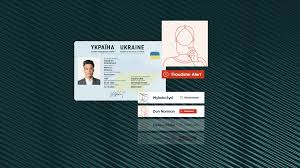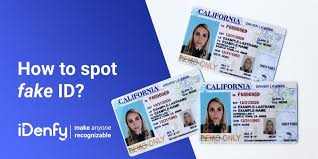Have a question? Give us a call: +1 (602) 672-1532
Digital ID cards for students
Introduction
- Overview of Digital Transformation in Education
- How technology is reshaping the education sector.
- The shift towards digitization in schools and universities.
- Introduction to digital ID cards as a part of this transformation.
- Why Digital ID Cards for Students Matter
- Importance of ID cards for campus security and management.
- Limitations of traditional student ID cards (e.g., physical damage, loss, security breaches).
- Rise of contactless, digital solutions to enhance efficiency.
Section 1: Understanding Digital ID Cards
- What are Digital ID Cards?
- Definition and explanation of digital ID cards.
- The technology behind digital ID cards (RFID, NFC, QR codes, mobile apps, etc.).
- How they differ from traditional physical ID cards.
- Key Features of Digital ID Cards
- Contactless access (campus facilities, libraries, dorms, etc.).
- Integration with mobile devices and wearable tech.
- Real-time updates and student verification.
- Customizable digital interfaces and designs.
- Benefits of Digital ID Cards for Students
- Increased convenience and functionality.
- Enhanced security and safety measures (e.g., lost card tracking, multi-factor authentication).
- Seamless integration with school services (cafeteria payments, public transport access, etc.).
- Technical Requirements and Implementation
- Overview of the technical infrastructure needed (servers, apps, hardware).
- Integration with existing school management systems.
- Security and privacy considerations (data encryption, GDPR compliance).
Section 2: Market Analysis for Digital ID Cards
- Current Market Trends in Educational Technology
- The global growth of educational technology (EdTech) sector.
- Statistics on the adoption of digital ID cards across institutions.
- Future projections and opportunities for market expansion.
- Competitor Analysis
- Key players in the digital ID card space.
- Comparison of features, pricing, and market positioning.
- Unique selling propositions and innovations from competitors.
- Challenges in the Market
- Common hurdles faced by institutions when adopting digital ID solutions (costs, technical complexities).
- Overcoming resistance to change and integrating with legacy systems.
- Managing student and parent concerns about data privacy.
Section 3: Target Audience Analysis
- Primary Target Audience: Educational Institutions
- Schools, universities, and online learning platforms as primary clients.
- Key decision-makers (administrators, IT departments, security personnel).
- Motivations for institutions (security enhancement, cost-efficiency, modernization).
- Secondary Target Audience: Students and Parents
- Benefits for students: convenience, access, and safety.
- How parents benefit indirectly (student safety assurance, ease of fee payments, monitoring attendance).
- Market Segmentation Based on Institution Type
- Large universities with multiple campuses: emphasis on campus integration and mobility.
- High schools: focus on security and parental access to student information.
- Online learning platforms: ensuring seamless student verification for exams.
Section 4: Product Features and Benefits in Detail
- Convenience and Mobility
- Mobile app integration for easy access to ID functionalities.
- Digital access to all campus facilities, reducing the need for multiple cards/keys.
- Simplified student service access (meal plans, event tickets, transportation).
- Enhanced Security Protocols
- Real-time tracking and geofencing features.
- Integration with biometric systems for secure access.
- Remote deactivation in case of loss or theft.
- Customization Options for Institutions
- Personalization with school logos, colors, and student information.
- Tailored features such as access restrictions based on schedules.
- Options for integrating additional functionalities (e.g., medical information, exam schedules).
- Cost-Efficiency and Sustainability
- Reduction in physical card production and replacement costs.
- Long-term savings for institutions through scalable digital infrastructure.
- Contribution to sustainability goals by reducing plastic waste.
Section 5: Case Studies and Success Stories
- Case Study 1: Implementation at a Large University
- Overview of the challenges faced before and after implementation.
- How digital ID cards improved security and operational efficiency.
- Student feedback and impact on overall campus life.
- Case Study 2: High School Adoption and Parental Involvement
- Insights into how high schools can benefit from digital ID technology.
- Parental perspectives on the improved safety and communication features.
- The role of digital IDs in managing attendance and performance tracking.
- Success Stories from Online Learning Platforms
- Role of digital IDs in verifying student identities for remote learning.
- Examples of increased student engagement and reduced academic fraud.
Section 6: Future of Digital ID Cards
- Trends Shaping the Future of Student Identification
- Integration with Artificial Intelligence (AI) for predictive analytics (e.g., predicting student behavior or attendance patterns).
- Expansion beyond student life: using digital IDs for alumni services and career tracking.
- Cross-institutional compatibility: collaboration between universities for a unified ID system.
- Potential for Additional Features and Services
- Payment integrations (e.g., cashless transactions).
- Virtual campus tours and orientation features within digital ID apps.
- Incorporation of virtual reality (VR) and augmented reality (AR) for immersive experiences.
- Sustainability and Ethical Considerations
- Focus on data security and ethical data use (compliance with regulations like GDPR).
- Ensuring that digital IDs are accessible to all students, including those with disabilities.
- Commitment to reducing environmental impact through paperless, plastic-free solutions.
Conclusion
Summary of Key Benefits and Future Potential
Recap of why digital ID cards are essential for modern campuses.
Future outlook: how digital ID solutions will evolve in the next decade.
Call to action for educational institutions to embrace digital ID technology for a safer and more efficient campus environment.
Call to Action
Encouraging institutions to schedule consultations or demos to explore digital ID card solutions.
Invitation for students and parents to provide feedback and share their experiences with digital IDs.
Related News
Read More >>
 Digital ID cards for students
Digital ID cards for students
Discover how digital ID cards are transforming the student experience by providing enhanced security...
 Novelty IDs
Novelty IDs
Dive into the world of Novelty IDs, where creativity meets customization. Explore how personalized I...
 Fake ID buyers
Fake ID buyers
In today’s digital age, the demand for fake IDs has surged, giving rise to a thriving and complex ma...
 Scannable Fake ID
Scannable Fake ID
This section sets the stage for understanding why scannable fake IDs are rising in popularity, touch...
 Custom Fake Texas ID
Custom Fake Texas ID
A deep dive into the world of Custom Fake Texas IDs—why they’ve become increasingly popular, how the...
 Georgia ID Card
Georgia ID Card
The Georgia ID Card is more than just a simple piece of plastic; it‘s a key to accessing a wide rang...


